Summary: The AI safety research community should adopt standardized terms for probability ranges, especially in public-facing communication and especially when discussing risk estimates. The terms used by the IPCC are a reasonable default.
Science communication is notoriously hard. It's hard for a lot of reasons, but one is that laypeople aren't used to thinking in numerical probabilities or probability ranges. One field that's had to deal with this more than most is climatology; climate change has been rather controversial, and a non-trivial aspect of that has been lay confusion about what climatologists are actually saying[1].
As a result, the well-known climate assessment reports from the UN's Intergovernmental Panel on Climate Change (IPCC) have, since the 1990s, used explicitly defined terms for probability ranges[2]:
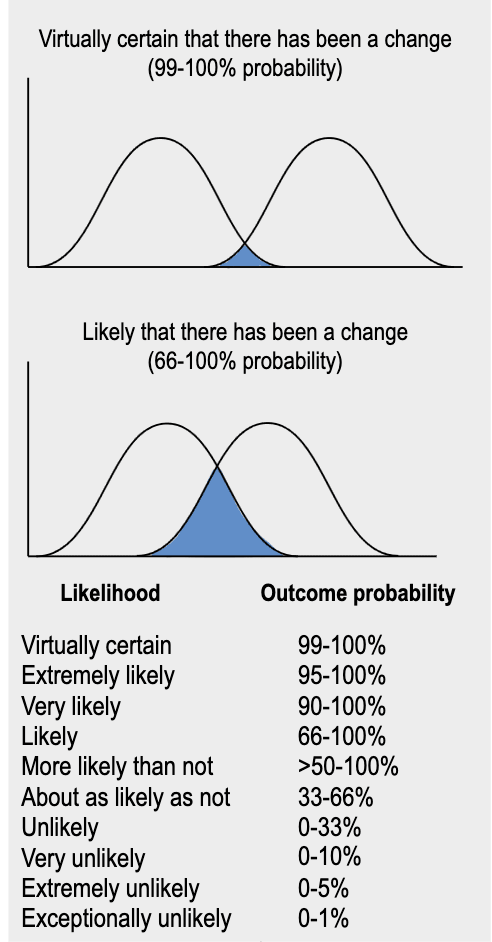
(see below for full figure[3])
Like climatology, AI safety research has become a topic of controversy. In both cases, the controversy includes a mix of genuine scientific disagreement, good-faith confusion, and bad-faith opposition. Scientific disagreement comes from people who can deal with numerical probability ranges. Those who are arguing in bad faith from ulterior motives generally don't care about factual details. But I suspect that the large majority of those who disagree, especially laypeople, are coming from a place of genuine, good-faith confusion. For those people, anything we as practitioners can do to communicate more clearly is quite valuable.
Also like climatology, AI safety research, especially assessments of risk, fundamentally involves communicating about probabilities and probability ranges. Therefore I propose that the AIS community follow climatologists in adopting standard terms for probability ranges, especially in position papers and public-facing communication. In less formal and less public-facing contexts, using standard terminology still adds some value but is less important; in sufficiently informal contexts it's probably not worth the hassle of looking up the standard terminology.
Of course, in many cases it's better to just give the actual numerical range! But especially in public-facing communication it can be more natural to use natural language terms, and in fact this is already often done. I'm only proposing that when we do use natural language terms for probability ranges, we use them in a consistent and interpretable way (feel free to link to this post as a reference for interpretation, or point to the climatology papers cited below[2]).
Should the AIS community use the same terms? That's a slightly harder question. The obvious first-pass answer is 'yes'; it's a natural Schelling point, and terminological consistency across fields is generally preferable when practically possible. The IPCC terms also have the significant advantage of being battle-tested; they've been used over a thirty-year period in a highly controversial field, and terms have been refined when they were found to be insufficiently clear.
The strongest argument I see against using the same terms is that the AIS community sometimes needs to deal with more extreme (high or low) risk estimates than these. If we use 'virtually certain' to mean 99 - 100%, what terms can we use for 99.9 - 100.0%, or 99.99 - 100.00%? On the other hand, plausibly once we're dealing with such extreme risk estimates, it's increasingly important to communicate them with actual numeric ranges.
My initial proposal is to adopt the IPCC terms, but I'm very open to feedback, and if someone has an argument I find compelling (or which gets strong agreement in votes) for a different or extended set of terms, I'll add it to the proposal. If no such argument emerges, I'll clarify the proposal to be more clearly in favor of the IPCC terms.
For ease of copy/paste, here is the initial proposed terminology in table form:
| Virtually certain | 99-100% |
| Extremely likely | 95-100% |
| Very likely | 90-100% |
| Likely | 66-100% |
| More likely than not | >50-100% |
| About as likely as not | 33-66% |
| Unlikely | 0-33% |
| Very unlikely | 0-10% |
| Extremely unlikely | 0-5% |
| Exceptionally unlikely | 0-1% |
I look forward to your feedback.
Thanks to @davidad and Stephen Casper for inspiring this proposal.
- ^
Eg: "It's so cold this week! Ha ha so much for global warming!" or "It's been proved climate change is going to kill everyone in the next twenty years, right?" Compare eg "Ha ha why would AI suddenly become conscious and start to hate humans?" or (pace EY) "So you're saying AI will definitely kill everyone, right?"
- ^
From figure 1.6 (page 157) of the most recent IPCC assessment report (2022), using terminology drawn from a number of papers from Katharine J. Mach and/or Michael D. Mastrandrea, eg "Unleashing expert judgment in assessment" (2017) and "Guidance Note...on Consistent Treatment of Uncertainties" (2010).
- ^
(note that this figure is labeled with 'AR5' but in fact is used in both AR5 and the current AR6)
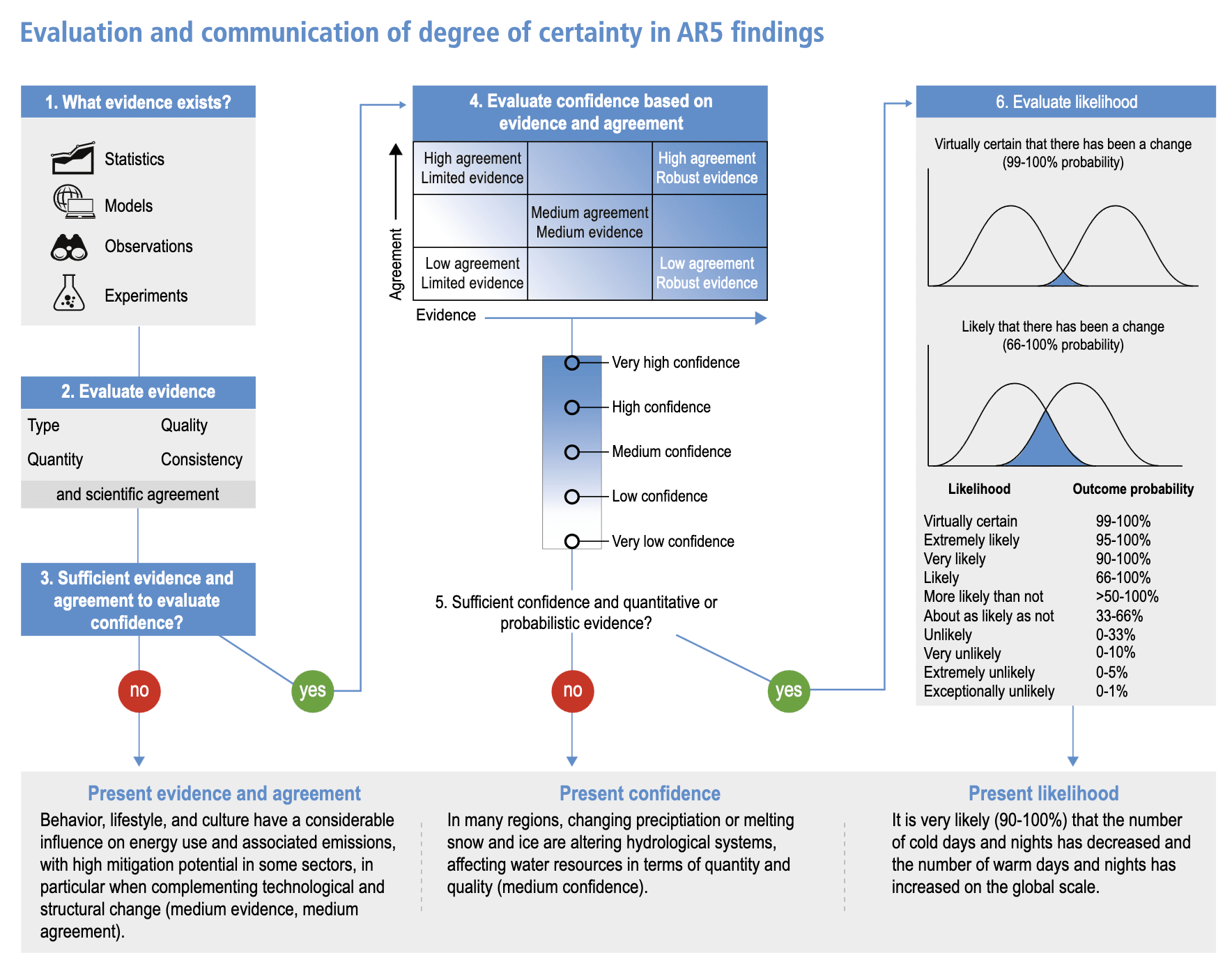
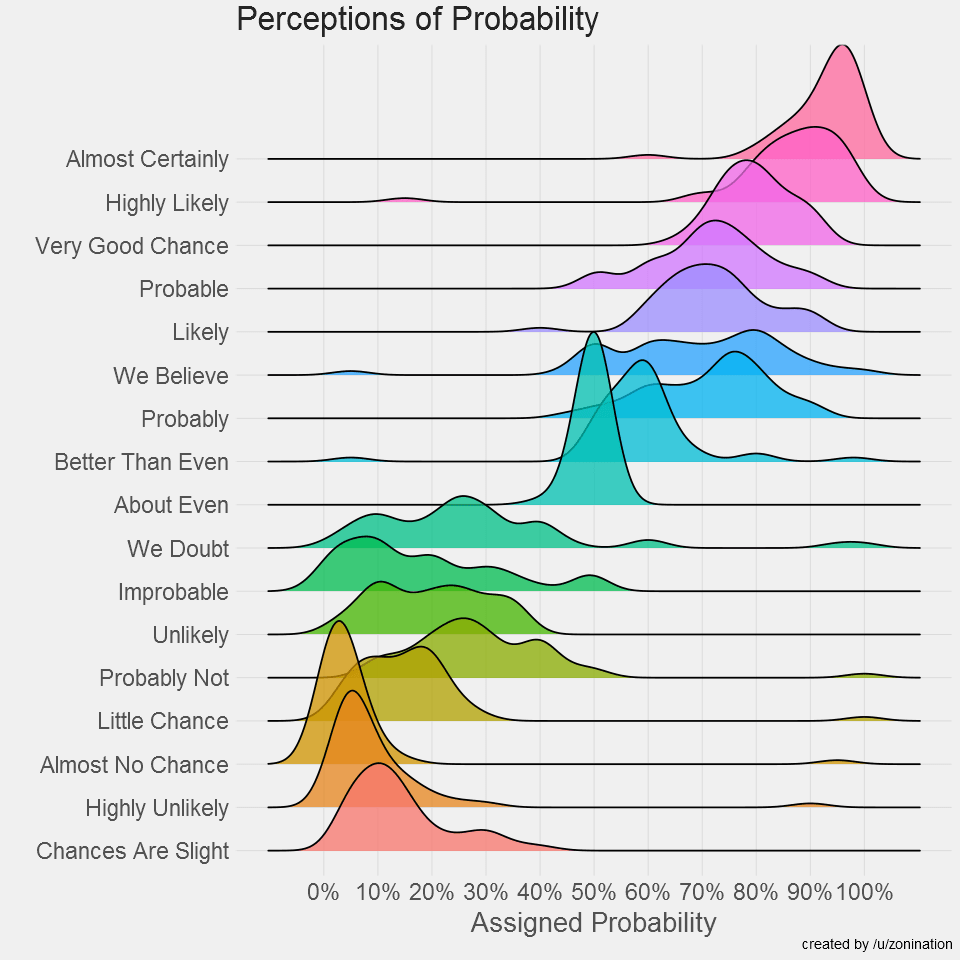
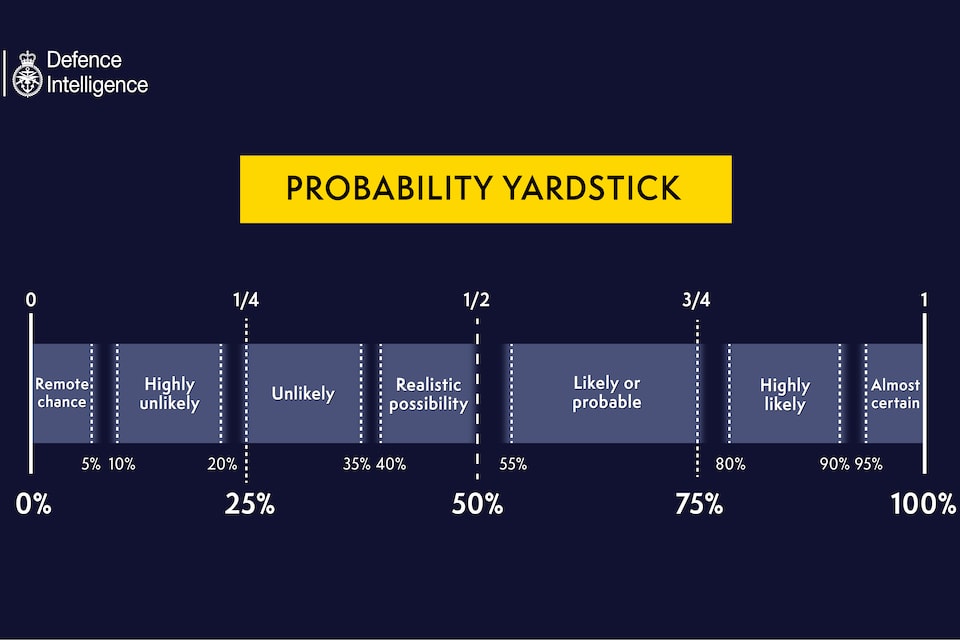
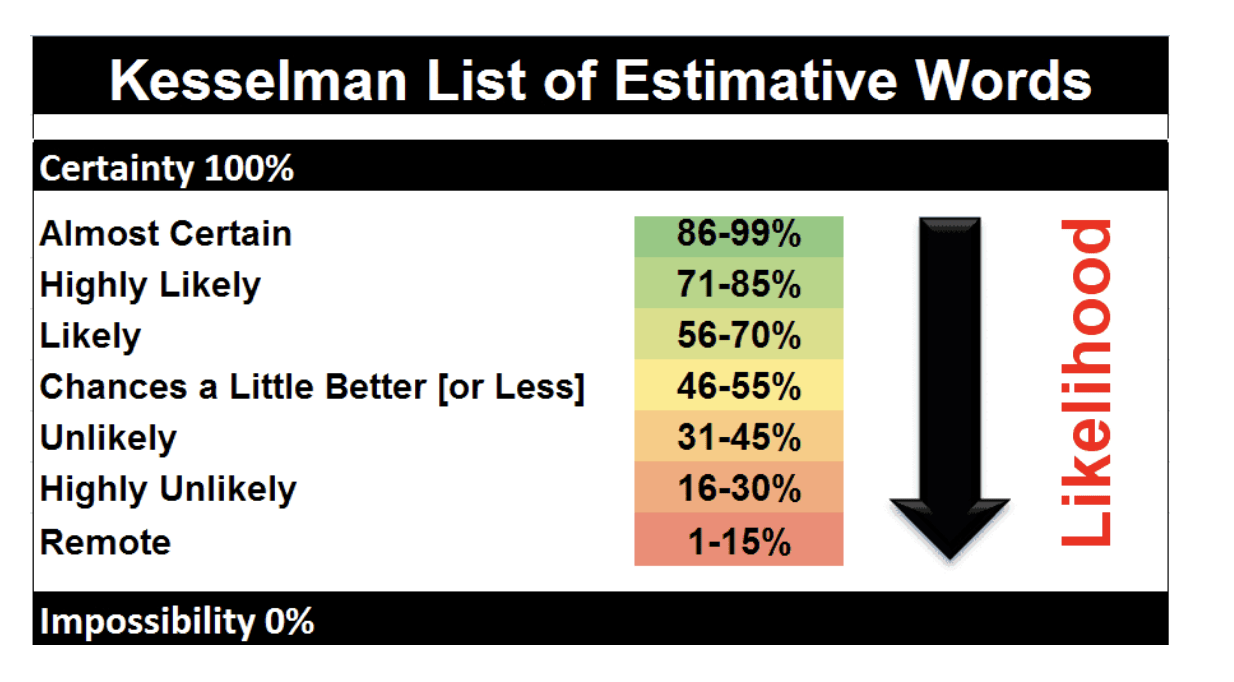
The UK Government tends to use the PHIA probability yardstick in most of its communications.
This is used very consistently in national security publications. It's also commonly used by other UK Government departments as people frequently move between departments in the civil service, and documents often get reviewed for clearance by national security bodies before public release.
It is less granular than the IPCC terms at the extremes, but the ranges don't overlap. I don't know which is actually better to use in AI safety communications, but I think being clear if you are using either in your writing seems a good way to go! In any case being aware it's a thing you'll see in UK Government documents might be useful.
Thanks! Quite similar to the Kesselman tags that @gwern uses (reproduced in this comment below), and I'd guess that one is decended from the other. Although it has somewhat different range cutoffs for each because why should anything ever be consistent.
Here are the UK ones in question (for ease of comparison):